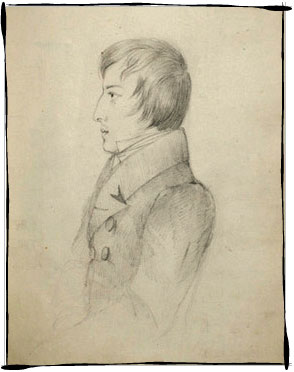



Andante spianato and Grand Polonaise brillante in E flat Major Op. 22
It was not until 1834 or 1835, in Paris, that Chopin added the introduction, given over to the solo piano. Some commentators consider that the two parts – the introductory Andante spianato and the actual Polonaise – do not suit one another, as they are too different. Yet that very diametrical contrast is what seems to link the two parts together.
The Andante spianato has the character of a nocturne, and at the same time of a lullaby. It forges an oneiric mood, from which the listener is only released by the fanfares of the horns announcing the Polonaise. Spianato means evenly, without contrasts, without any great agitation or anxiety. Thus interpreters are put in mind of the mood of a harmonious moonlit night, a landscape dominated by the reflecting surface of a lake, or even the singing of sirens on gently rocking waves or the immersion in a state of unwavering meditation. The arabesque of the piano, wending its way endlessly above the nocturne-like accompaniment, fades away. New music appears – different, though also hushed: songful and melodious, and lightly tripping, but above all focussed and straightforward, played semplice and entirely without pedal. Pauses are then followed by a return to the music of the interrupted nocturne. But that too dies away, giving way for a moment once more to the concentrated chords of that semplice, now frozen in immobile expectation.
The dramatic structure of this work – as a whole – is uncomplicated: the listener has to be drawn into a trance by the magic of music from the boundaries of dream and reality, before being roused, with the sound of the orchestral tutti and the rhythms of the polonaise, to a new life.
What happens in this work as the theme of the polonaise enters has been described in various ways, but always with distinct admiration. For Jan Kleczyński, it is ‘a real firework of wondrous passages and bold phrases’, for Zdzisław Jachimecki ‘a wondrously shimmering play of lights and colours’, and for Tadeusz Zieliński ‘a wealth and magnificence of patterns in sound’.
The formal shape of the Polonaise is not easy to define, as it results from the combining of two principles: the refrain-based form characteristic of a rondo and the reprise-based form peculiar to a dance with trio. Except that the theme of the refrain is altered through variation, and the trio of the dance presents a whole group of themes. As for the texture, two versions of the work came into being: the original version, with the subtle accompaniment of an all-but-absent orchestra, and a second version for solo piano.
The principal theme of the Polonaise combines soaring flight with spirit and verve, bravura with elegance – all of those features that characterise a dance in the style brillant. That opening (and principal) theme is at once developed by a complementary theme that is suffused with harmoniousness and given over to play.
On its return, that distinctly polonaise principal theme takes on a nocturne-like character. Its melody begins to lose itself and diffuse in astonishing fioriture.
The function of episodes is taken on by three themes of differing character and expression. The first, in E flat major, brings to the work a sudden enlivenment: lacy melodic ornaments and figurations are broken up by a gesture of double octaves played forte and risoluto. The second of the episodes, in C minor, brings the mood of a lyrical espressivo. The third, in B flat major, with its chains of sixths and fifths, brings gentle harmoniousness, close to impressionistic effects. As befits a composition in the brillant style, the work is rounded off with a dazzling, refulgent coda.
The end result is a work in grand style, par excellence virtuosic. And that is how it was called when it came to be published: Grande Polonaise Brillante, précédée d’un Andante spianato. Chopin dedicated it to one of his aristocratic pupils, the Baroness d’Est. He first performed it, with marked success, in April 1835, at the Paris Conservatory, in a benefit concert for the then famous Parisian conductorFrançois-Antoine Habeneck. But just as the music of the E flat major Polonaise constituted the final farewell of Chopin the composer to a purely virtuosic style, so that concert was the last grand concert given in Paris by Chopin the virtuoso. As a pianist, he left the grand concert platform, and as a composer he entered the peak phase of his fully mature individual style – a style in which pianistic virtuosity was placed at the service of expression.
The Grande Polonaise Brillante in E flat major, Op. 22, preceded by the Andante spianato, is a magnificent example of the genre. Played with the utmost fluency, subtlety and sensitivity to the beauty of the sound, it confirms the delight of Jan Kleczyński: ‘There is no composition stamped with greater elegance, freedom and freshness’.
Author: Mieczysław Tomaszewski
A series of programmes entitled ‘Fryderyk Chopin's Complete Works’
Polish Radio 2

